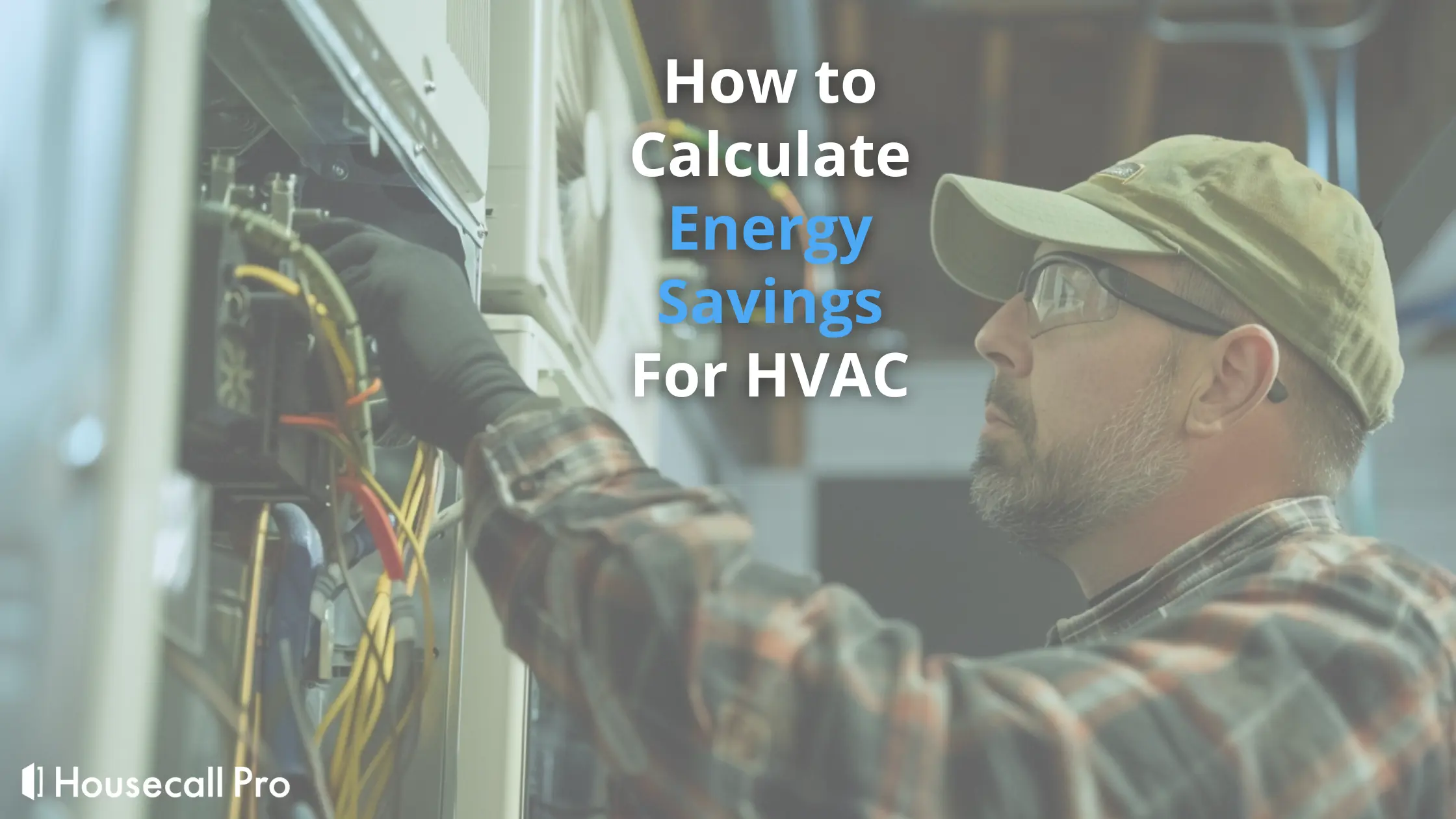
In the HVAC industry, accurate calculations are essential. From HVAC load calculations that ensure an accurately sized system to CFM calculations that iron out airflow rates, knowing how to complete a precise calculation is a must. And, to no one’s surprise, they’re also important when calculating HVAC energy savings.
Heating and cooling a home or business isn’t cheap, especially in the heat of summer or the icy grips of winter. So, at some point, your customer will probably be ready to swap their old, outdated, and inefficient system for a new, modern, and ultra-efficient model. When that happens, they might even ask you about their HVAC energy savings.
Knowing the HVAC energy savings formula (or where to find a helpful calculator) can help you give your customers an accurate estimate of the savings they can expect. Here’s what you need to know.
What Are HVAC Energy Savings?
HVAC energy savings are the savings you get from switching to a more efficient unit. Older units tend to be far less efficient than their newer counterparts, so when you swap an old, run-down unit for a spiffy, new one, you’ll likely enjoy HVAC energy savings. Of course, the amount of money saved depends on the specifics of each unit, so don’t start counting the dollars saved quite yet.
How Can You Save Energy in HVAC?
There are a couple of ways to save energy in running an HVAC system, such as ensuring your insulation game is up to par and confirming that your heated or cooled air isn’t sneaking out through itty bitty cracks around a window. While those methods work (and are important for HVAC energy savings), investing in high-efficiency equipment is arguably one of the best ways to help your customers save.
Choosing air conditioners and heat pumps with high SEER and HSPF ratings can dramatically decrease energy consumption. That means lower utility bills over the long run. Furnaces with high AFUE ratings are the same story, this time by converting more fuel into heat, which translates to lower heating costs.
While the initial upfront costs can seem steep to your customers, the long-term energy savings make the swap well worth it.
Important HVAC Energy Efficiency Terms
The HVAC industry is full of acronyms (including the industry name) and terms surrounding efficiency. The most important ones to know include:
- SEER: Seasonal Energy Efficiency Ratio, measures the efficiency of an air conditioning system over a standard cooling season by dividing the cooling output over the season by the energy consumed in watt-hours. The higher the SEER rating, the more efficient the unit.
- HSPF: Heating Seasonal Performance Factor, measures the efficiency of a heat pump in heating mode over a standard heating season using a ratio of total heating output to total electricity consumed. Higher HSPF ratings indicate a more efficient unit.
- AFUE: Annual Fuel Utilization Efficiency, a metric that measures the efficiency of oil and gas furnaces and represents the percentage of fuel that is converted into usable heat. For example, if a furnace has a 95% AFUE, that means that 95% of the fuel the unit consumes is turned into usable heat.
- COP: Coefficient of Performance, a ratio that measures the efficiency of heating or cooling systems, calculated by dividing the useful heating or cooling provided by the energy consumed. The higher the value, the more efficient the system.
- EER: Energy Efficiency Ratio, measures the efficiency of an AC unit at peak load (usually the hottest time of the year). To calculate EER, you divide the cooling capacity by the power output.
- BTU: British Thermal Units, a measurement for heat energy. It tells you how much heat you’ll need to raise the temperature of one pound of water by one degree Fahrenheit. In HVAC, it indicates the size of the unit, although we usually convert it to tons in the U.S.
How Do You Calculate HVAC Energy Savings?
There are two ways to calculate HVAC energy savings: the old-fashioned way (math!) and the convenient way (phew, a calculator). If you prefer running the numbers and working out the details on your own, you can pop your values into the formula and work out the equation to calculate HVAC energy savings.
Or, if you’re not too keen on dealing with a lengthy formula and large numbers, you could plug your values into a convenient HVAC energy savings calculator. This way, you’ll get your answer in no time. It’s a win-win (no math, little waiting!).
Get In Touch: 858-842-5746
Let us earn your trust
On average, Pros increase monthly revenue generated through Housecall Pro by 50% after their first year.
See plan options and feature breakdown on our pricing page.
What is the Formula For HVAC Energy Savings?
The HVAC energy savings formula looks like this:
((AC Capacity in BTU / 12,000) x 1,000 x (1 / Current SEER or AFUE rating) X 2,200) – ((AC Capacity in BTU / 12,000) x 1,000 x (1 / New SEER or AFUE rating) x 2,200).
The formula accounts for the new and existing systems’ size and efficiencies, incorporating set factors to determine overall energy savings between the two. It’s somewhat of a lengthy formula, but once you plug in your numbers and do the math (or let your calculator handle the hard part for you), you’ll get the information you need.
How to Use the HVAC Energy Savings Calculation Formula
Using the HVAC energy savings calculation formula is simple. All you’ll need to do is identify the defining numbers and plug them in. So, for example, let’s say we’re working on a home that currently has a 3-ton air conditioning unit (36,000 BTUs). The existing system has an efficiency rating of 10 SEER, and the customer wants to upgrade to a 17 SEER unit.
Here’s what our equation would look like with these values:
HVAC energy savings = ((36,000 / 12,000) x 1,000 x (1 / 10) x 2,200) – ((36,000 / 12,000) x 1,000 x (1 / 17) x 2,200)
Once you plug in these numbers (or whatever numbers fit the situation), solve the equation. And, just like that, you’ll have your answer!
HVAC Energy Savings Calculator
If math isn’t your strong suit or you simply prefer the convenience of modern technology, use Housecall Pro’s HVAC energy savings calculator. With this tool, it’s easier than ever to iron out the details of HVAC energy savings between two units.
First, click on the heating or cooling setting based on the units you’re upgrading. Then, select the right information from the drop-down menus, including the location of the unit, current efficiency rating, and new efficiency rating. And, within mere seconds (or a bit longer, depending on your internet speed), you’ll have your answer. Talk about easy!
When trading up to a more efficient unit, having a general idea of HVAC energy savings can be helpful. It gives your customers a better idea of what they can expect from the new unit. It can even help them decide what SEER, HSPF, or AFUE rating they want their unit to have! So, use the calculator (or formula if that’s more your speed) to get the answers you need. No more HVAC energy savings guesswork!






